





 |
 |
 |
 |
 |
 |
| Greg Lavaty | profile | all galleries >> My Blog >> The Rainbow Bird, Who Doesnít Love a Painted Bunting? 08-14-2012 | tree view | thumbnails | slideshow |
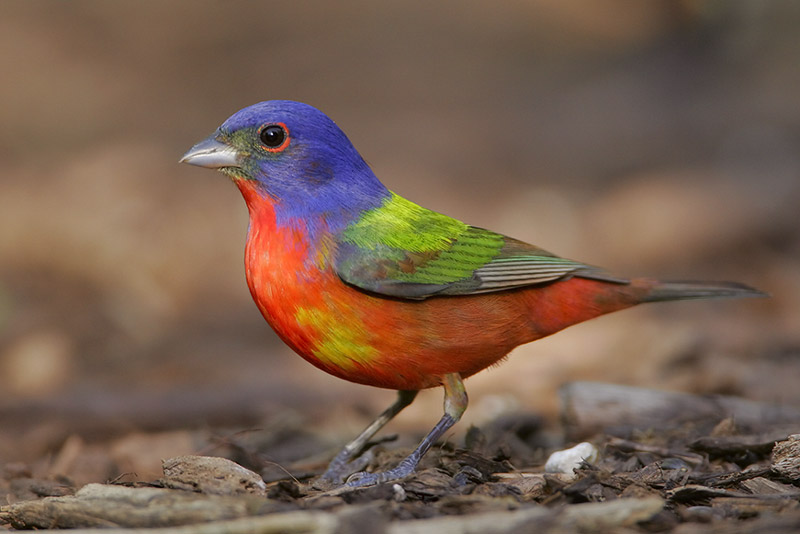
Our buntings (Painted, Indigo, Lazuli, Blue and Varied) are closely related to cardinals and grosbeaks. All of which are sexually dimorphic; the male looks different from the female. The male has a blue head with red eye-rings, a yellow-green back and a bright red underside and rump. If you happen upon a Painted Bunting in the field, identification of an adult male is a piece of cake, nothing else looks like it. As its name suggests, it really does look like someone painted the colors on. The female and immature male birds are a little tougher to identify though they look significantly different from other species on the UTC. Both the females and young males are green to greenish-yellow over their whole body and the two are very difficult to tell apart in the field. Male birds donít achieve their definitive plumage until after their first breeding season.
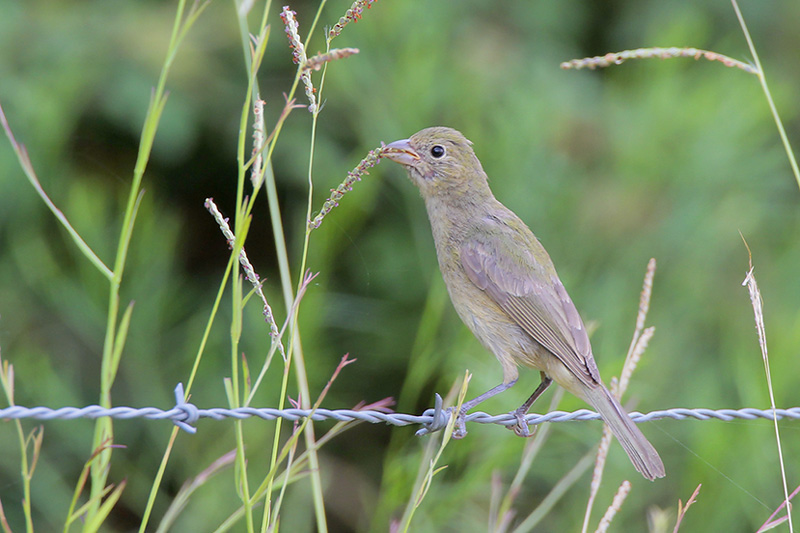
Buntings have relatively stout beaks that are good for eating seeds so it makes sense that they are often feeding on the seeds of various grasses and weeds. Their diet, however, is not limited to seeds; Painted Buntings are often observed eating grasshoppers, caterpillars, spiders and other small organisms.
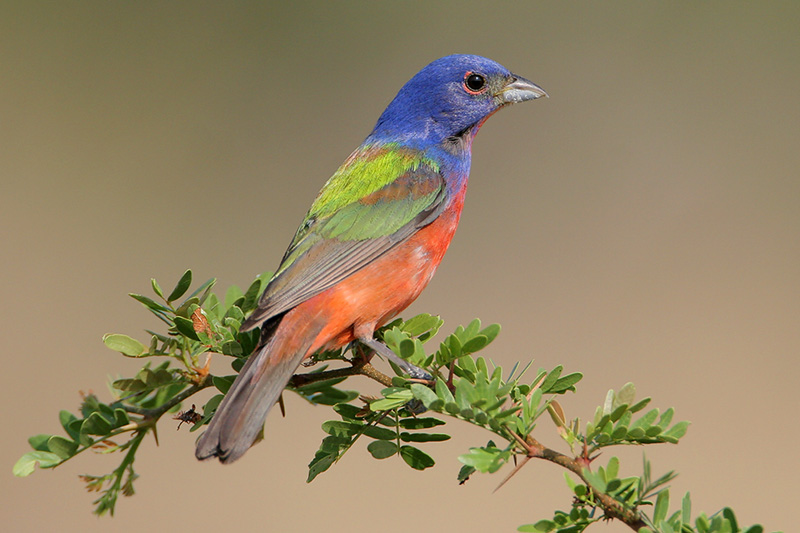
You might think that a bird as brightly colored as this would be difficult to miss when out birding, sadly this isnít the case. Painted Buntings are relatively small birds and spend a lot of their time in brush and weeds or up in trees where they are concealed by vegetation. One of the features of the Painted Bunting that does aid in its detection is its distinct song. During breeding season, male birds sing in the treetops almost all day long, even during the heat of the afternoon.
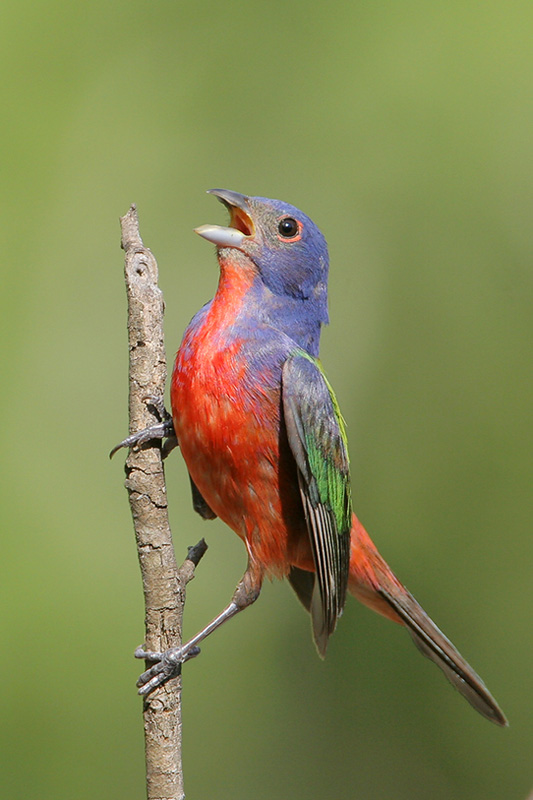
On one occasion I was visiting a friend, whose wife had seen some of my bird photos. She told me that she had always wanted to see a Painted Bunting. To that I answered that she was in luck because I had heard one singing in the pecan tree in her front yard. We quickly went out on the driveway and I pointed out the song and after a few minutes we all got nice views of the bird.
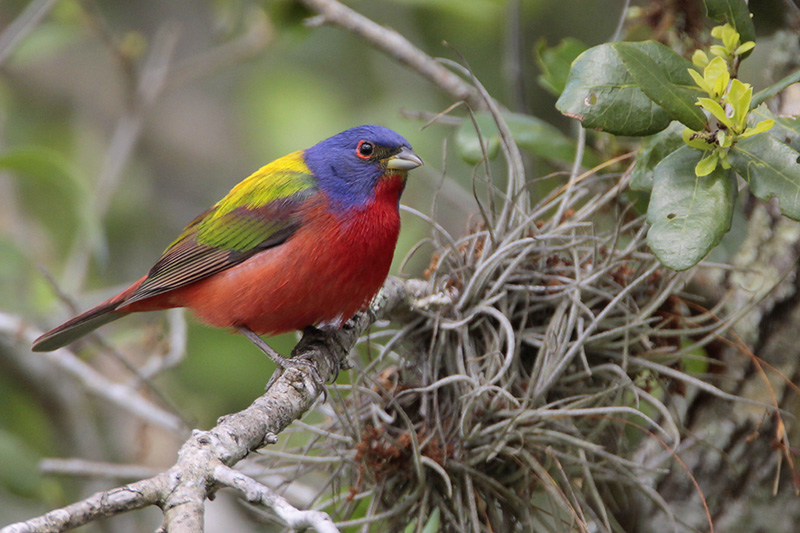
Painted Buntings start arriving on the upper Texas coast in April and are present as late as mid-October. However, they can be difficult to find until the middle of April and adult males seem to start getting scarce at end of July. The Painted Buntings that breed on the UTC molt on their breeding grounds just before fall migration making them somewhat less photogenic in the late summer as can be seen in this photo that I took recently near Brazoria NWR.
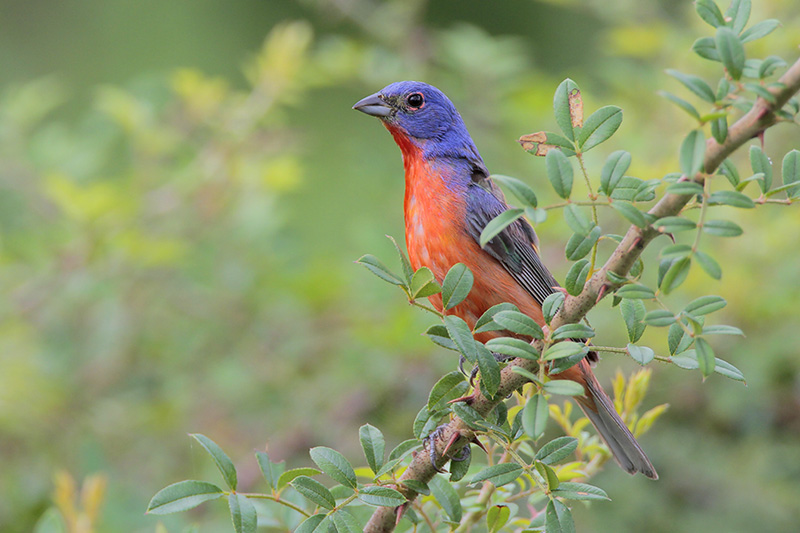
Breeding populations of Painted Buntings have been declining over the past few decades. Heavy human development of lands along the coast is believed to be part of the reason for this decline along with parasitism from Brown-headed Cowbirds. Since the Cowbirds are relatively new arrivals to the scrub habitat that the Painted Buntings on the UTC prefer, the buntings have not developed defenses against this parasitism.
To see more photos of Painted Buntings look here:
https://pbase.com/dadas115/painted_bunting
| Spurwing Plover | 26-Mar-2017 05:09 | |
| Guest | 26-Jan-2013 15:31 | |
| Bob Becker | 15-Aug-2012 15:48 | |